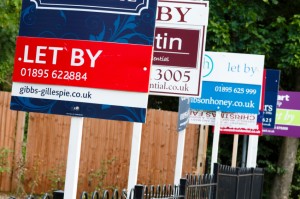David Kingman reports on a new set of data which shows that home ownership levels in the UK are beginning to fall behind those in other European countries, bucking historical trends
Britain is turning into a nation of renters at lightning speed, according to a new set of data which has recently been released by Eurostat, the European Union’s official statistics body.
Falling behind France
The UK has traditionally been known as a country where levels of owner-occupation were high compared to the European average. As many people are aware, owner-occupation has been the dominant housing tenure in Britain throughout the post-war period, while in other parts of Europe, particularly Switzerland and Germany, it has remained far more common for people to live in rented property throughout their lives rather than to buy.
However, the long-term crisis in housing affordability which has been witnessed in Britain is laid bare by recent figures that show levels of owner-occupation have fallen to the point where France actually overtook the UK last year.
The level of owner-occupation in the UK peaked at 73.3% back in 2007, but the latest figures show that this had declined to 64.6% in 2013, while in France it was 64.3%, with the figures for 2014 expected to show that France has pulled ahead of the UK. Perhaps more significantly, the average across the EU is 70%, so rates of home-ownership in the UK are now below the European average.
Is buy-to-let to blame?
In its coverage of this story, The Times [LINK?] quoted several commentators who argued that the growth of buy-to-let (BTL) was a major contributor to this trend because landlords have been buying homes to rent that would otherwise have gone to first-time buyers; according to this article, between 2000 and 2012 the number of rental properties in the UK increased by 2.5 million, compared to an increase of just 400,000 in owner-occupiers.
According to Alex Hilton, the director of Generation Rent, a tenants’ advocacy group, survey evidence they have collected suggests that just 25% of private renters would choose to live in the sector if they had a completely free choice; he argues that “…there is not a level playing field with buy-to-let borrowers.”
Previous research undertaken by IF supports this view: a report in 2013 called Why BTL (buy-to-let) equals “Big Tax Let-off” argued that landlords benefit from taxpayer-funded subsidies that could be worth up to £5 billion per year, as they are allowed to deduct mortgage interest as an expense against their rental income and claim a “wear and tear” allowance that gives them 10% of gross rents tax free, while at that time it was also fairly straightforward for them to avoid paying Capital Gains Tax when they sold a former rental property (the rules governing this have subsequently been tightened slightly).
There was also a report published last year by the Intermediary Mortgage Lenders Association (IMLA) which argued that new rules governing mortgages, particularly the mortgage market review (MMR) are likely to further favour buy-to-let landlords at the expense of first-time buyers. According to their calculations, a first-time buyer who borrows the same amount as a landlord at an interest rate of 4% could face monthly repayments which are 58% higher than the landlord’s because the new rules mean they would almost certainly have to take out a capital repayment mortgage, whereas landlords can still obtain ones which are interest-only.
The growth of private renting in Britain represents a major social change which broader society is still only just getting to grips with. However, barring any major changes, this is something that we will all have to get used to because, as the IMLA report forecast, “if current trends in tenure continue, two decades from now the majority of Britons will rent their home for the first time since the early 1970s.”
